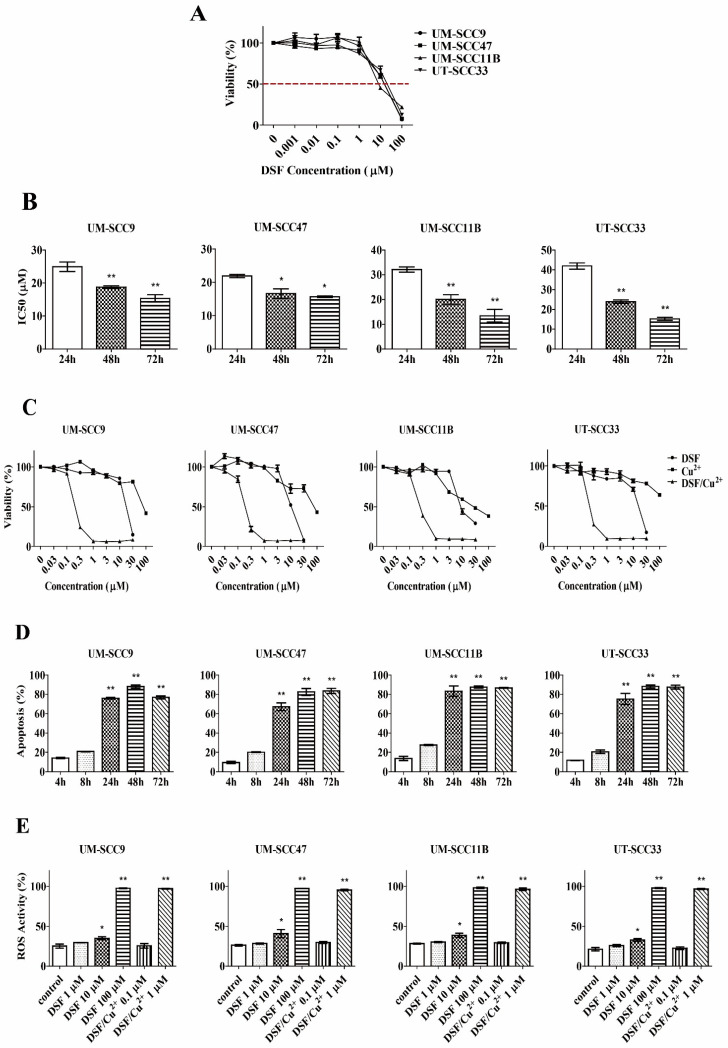Figure 1.
Cytotoxicity and reactive oxygen species (ROS) generation of disulfiram (DSF) or DSF/Cu2+. (A) Cells were exposed to different concentrations of DSF for 72 h and subjected to the 1-(4,5-dimethylthiazol-2-yl)-3,5-diphenylformazan (MTT) assay, n = 3. (B) Cells were exposed to different concentrations of DSF (0.1–30 μM) at the indicated time intervals. The levels of IC50 were measured by the MTT assay. * p < 0.05 and ** p < 0.01, n = 3, one-way ANOVA, compared to 24 h. (C) Cells were exposed to different treatments for 72 h, and the viability was measured by the MTT assay, n = 3. (D) Cells were exposed to DSF/Cu2+ (1 µM) at the indicated time intervals. The apoptotic cell population was identified by the Annexin/V-PI (propidium iodide) assay. ** p < 0.01, n = 2, one-way ANOVA, compared to 4 h. (E) Cells were exposed to different concentrations of DSF or DSF/Cu2+ for 24 h; then, the ROS activity was measured. * p < 0.05 and ** p < 0.01, n = 2, one-way ANOVA, compared to the control.

